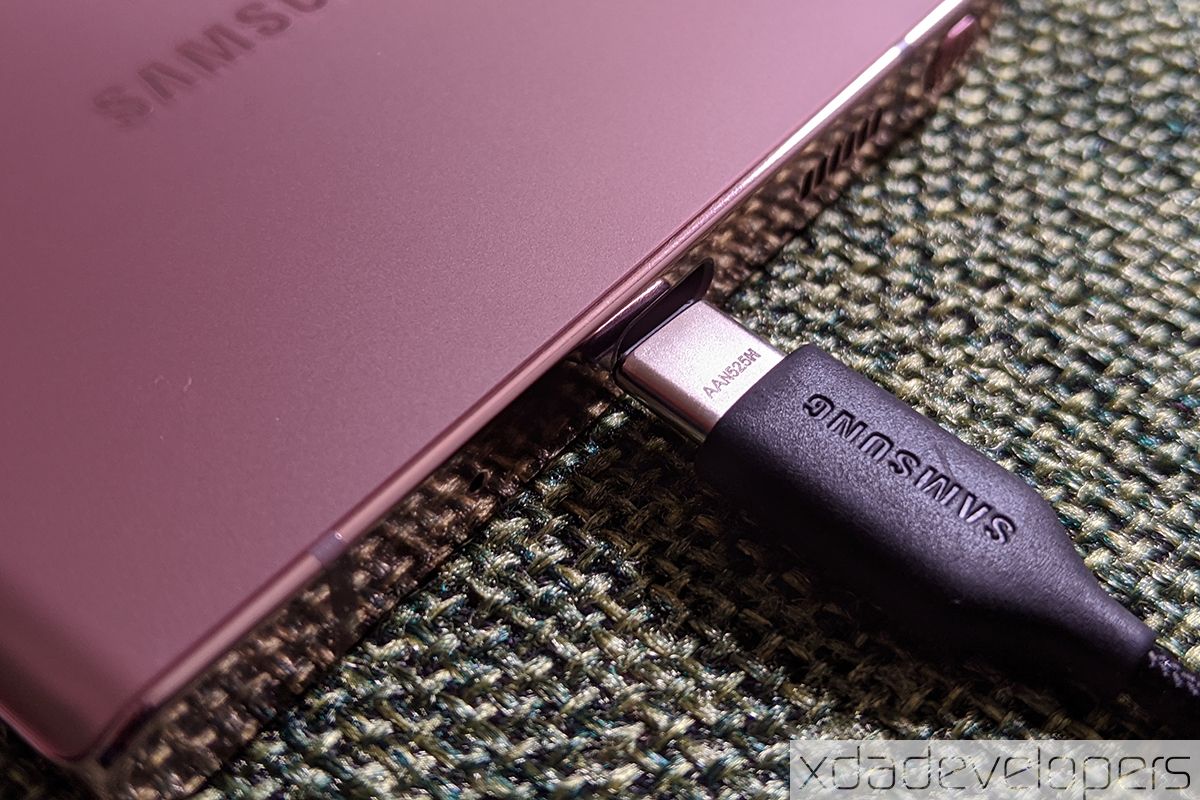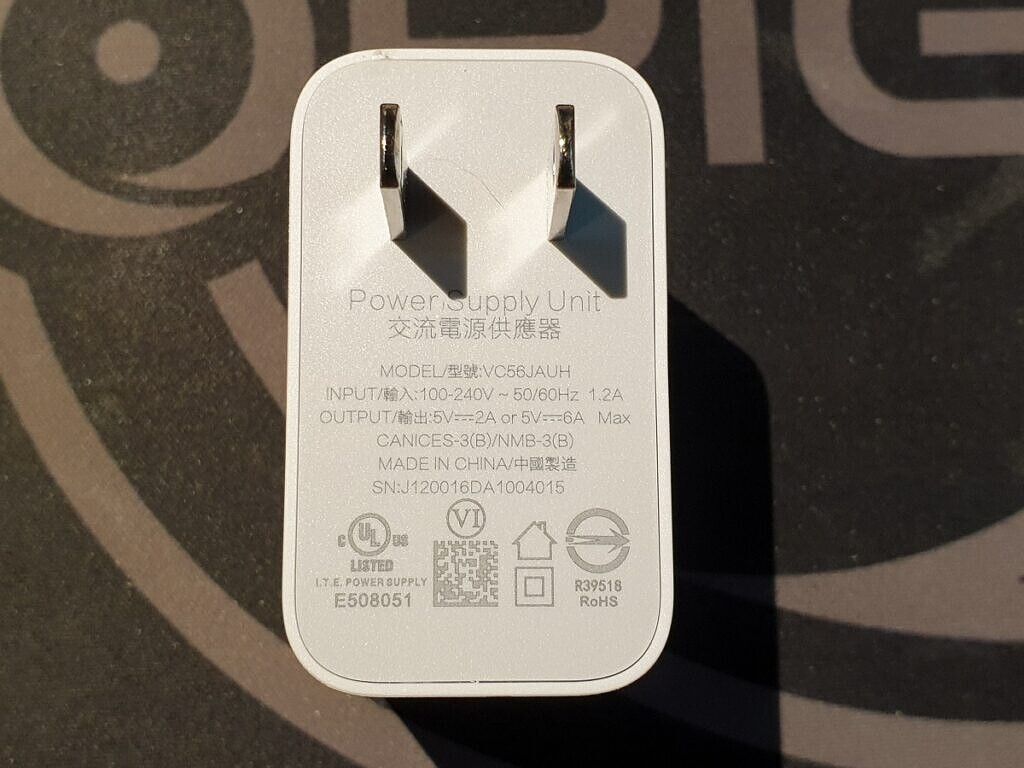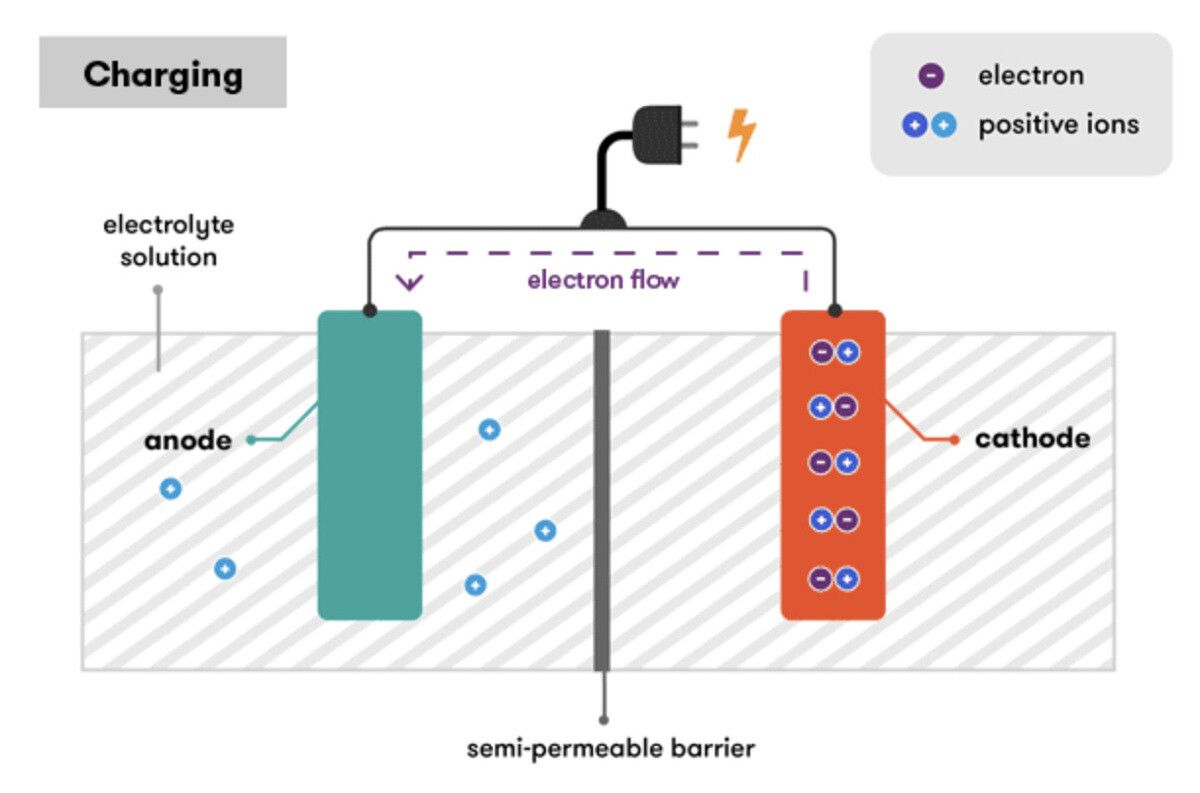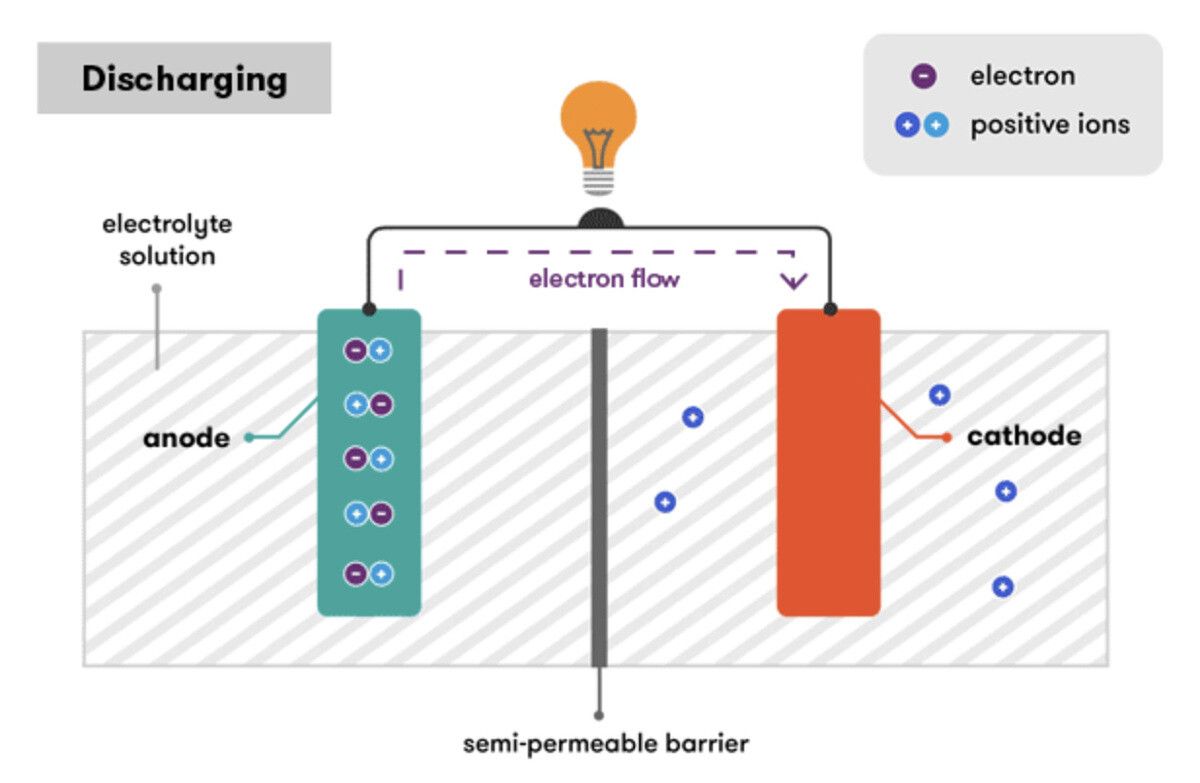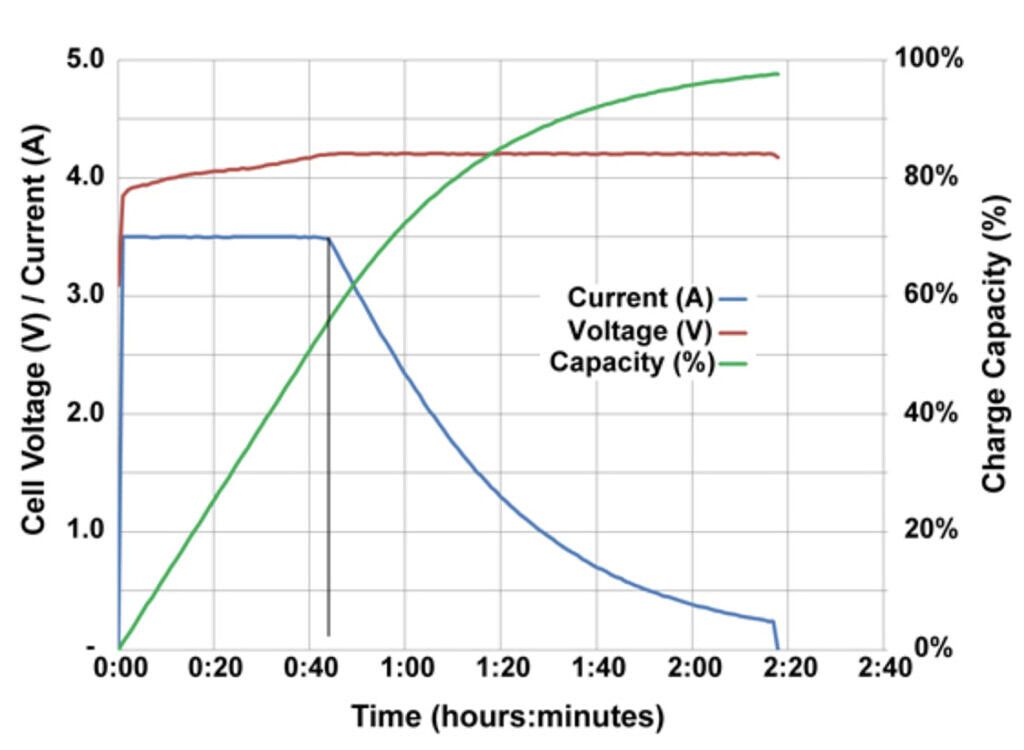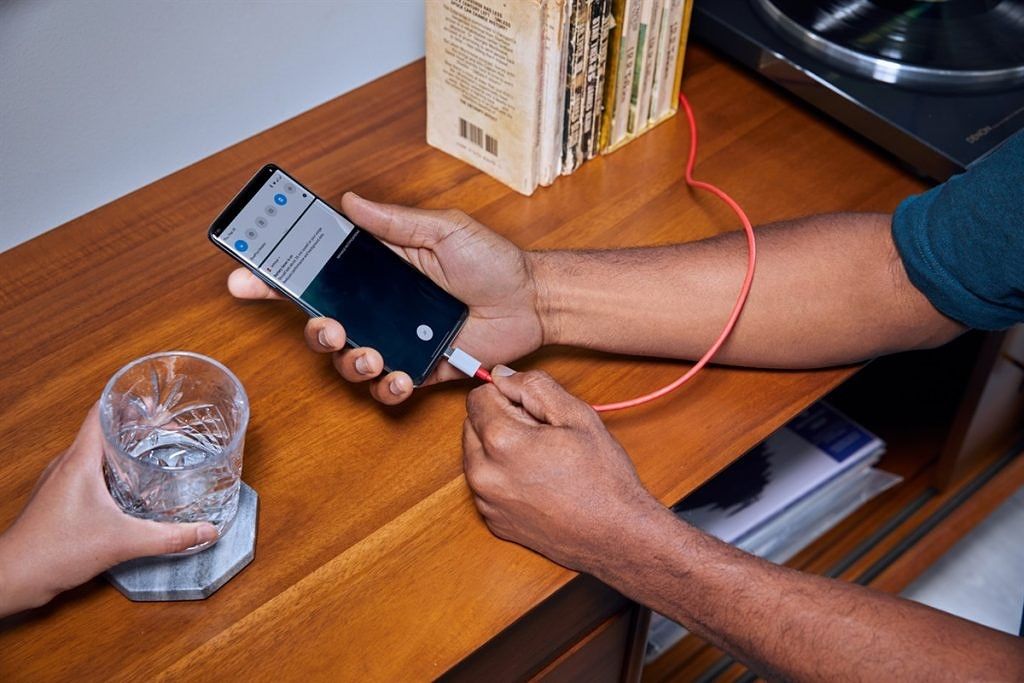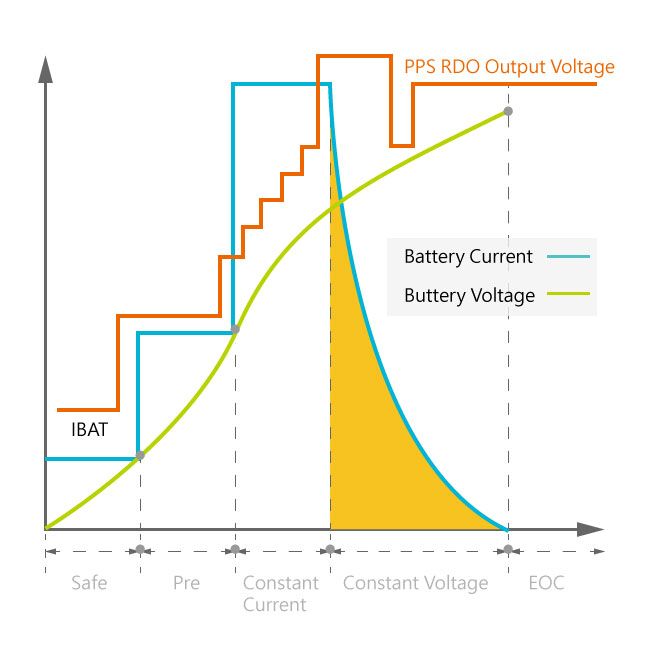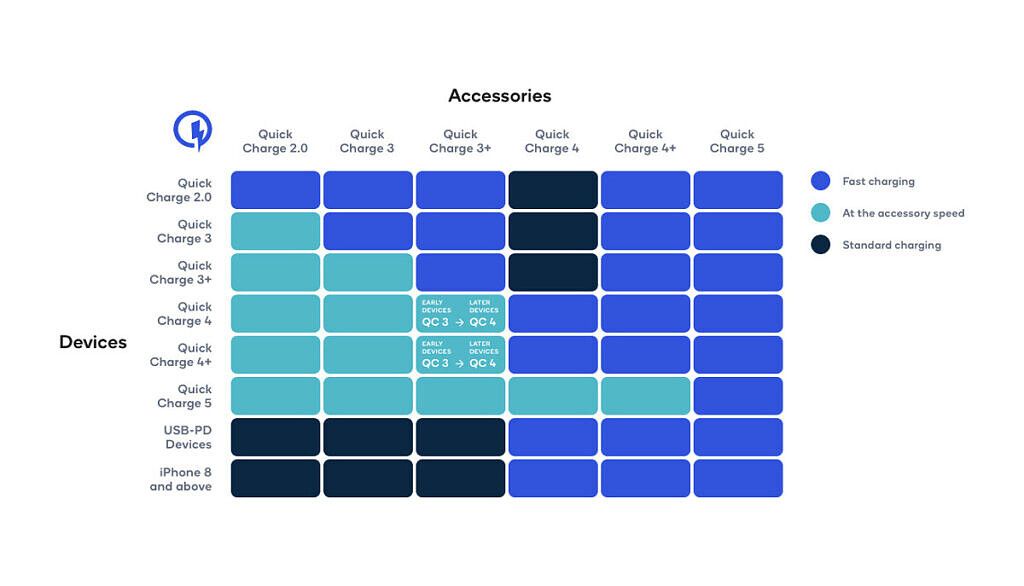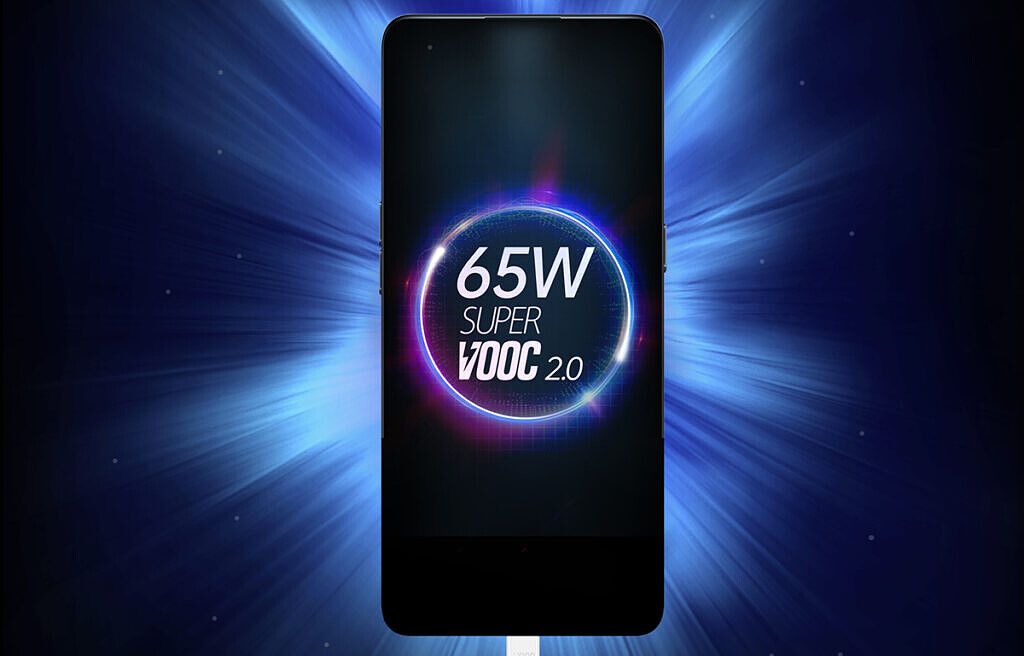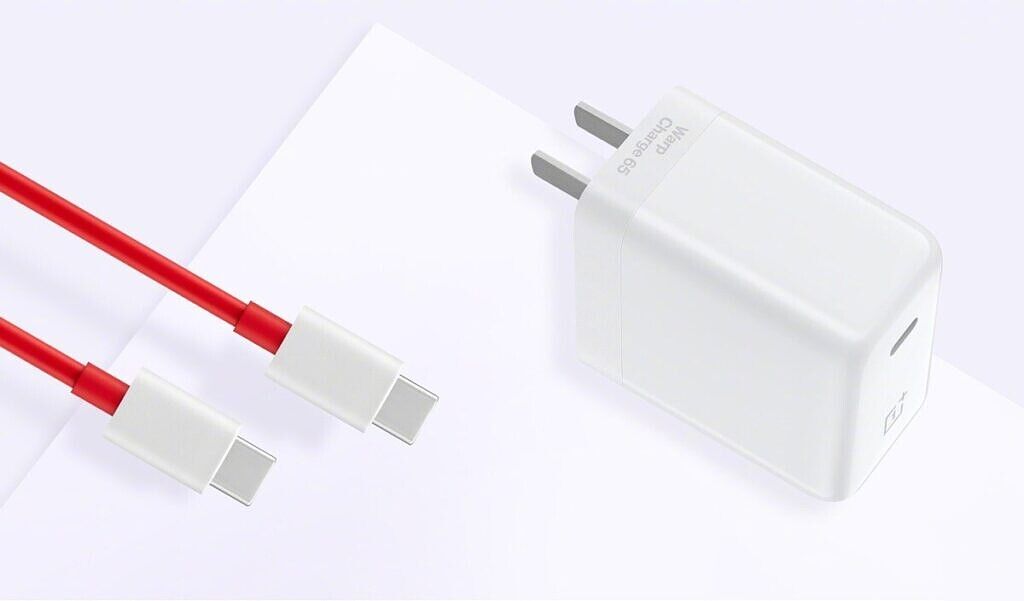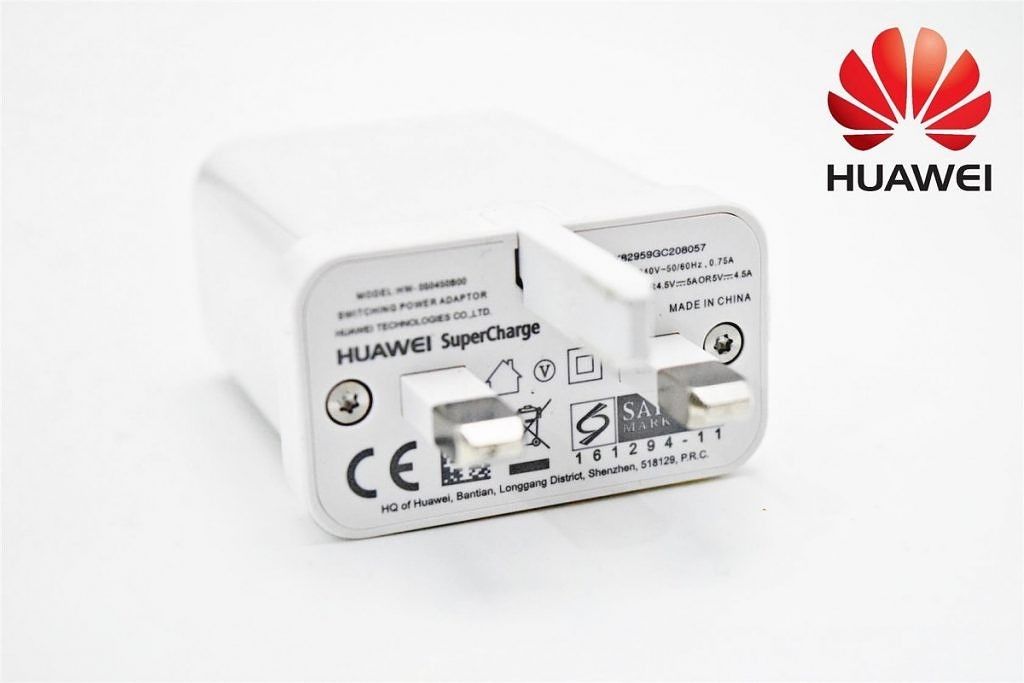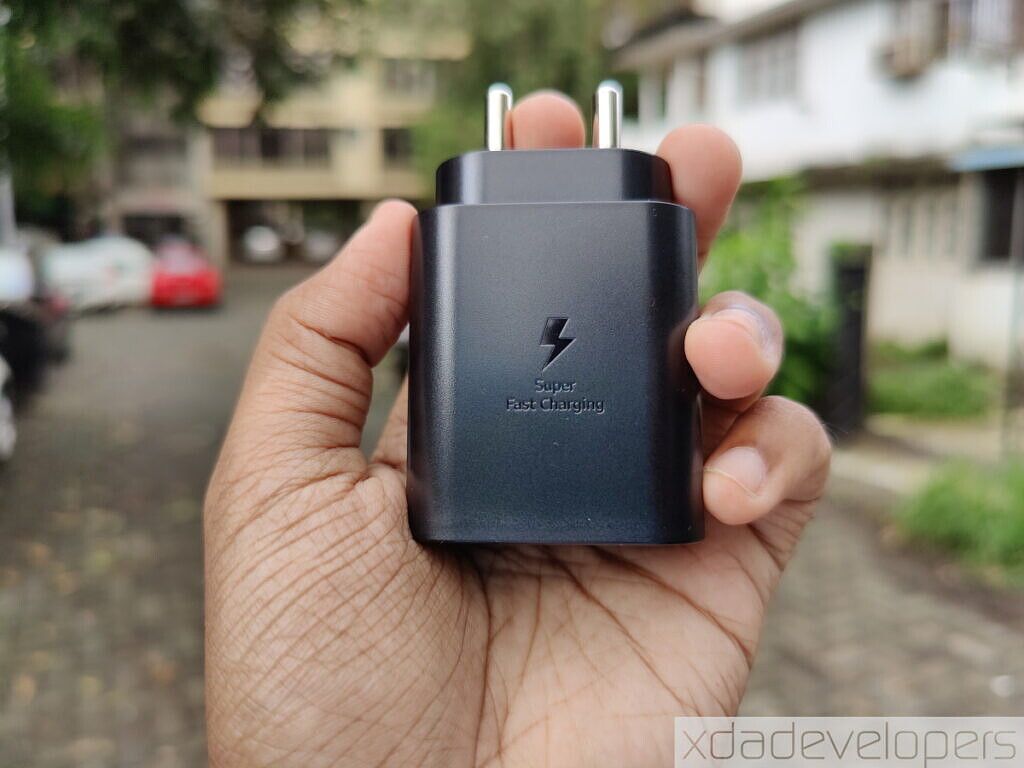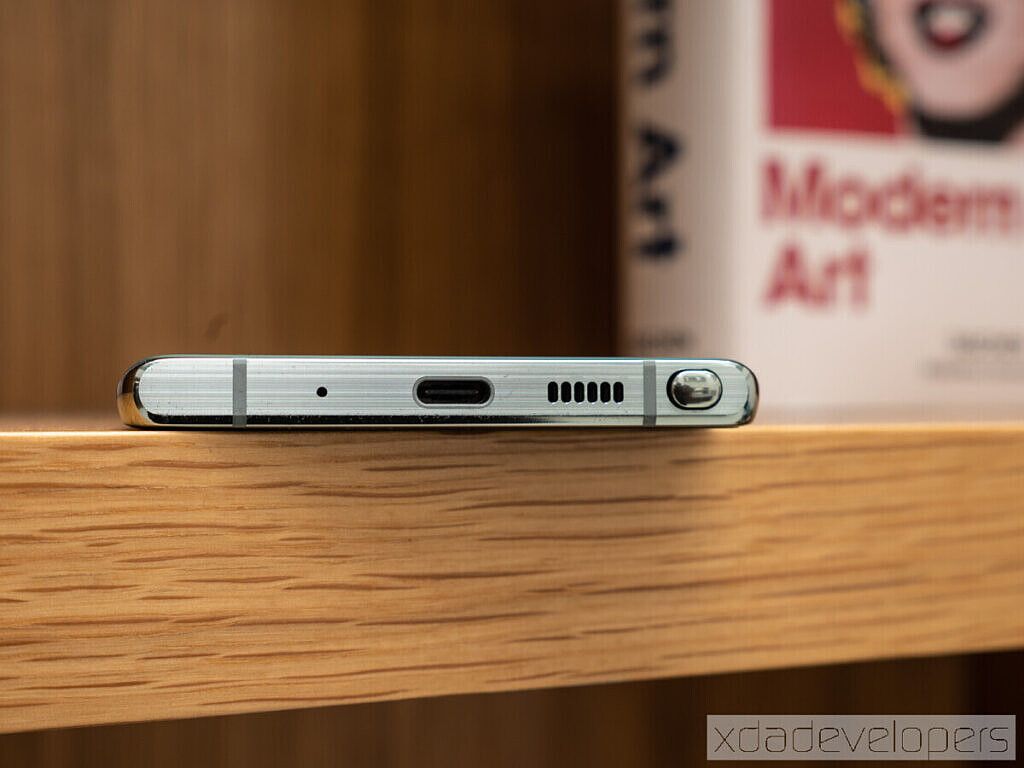Quick Links
Smartphones are getting smarter by the minute, and as a result, our smartphone usage is ballooning. This spike in smartphone usage has inspired companies to devise newer methods to improve battery backup. While making batteries bigger is the most obvious choice, the bulking it causes to a smartphone is also unavoidable. The next best alternative is to slash the torturous waiting periods for charging, allowing users to get several hours of usage from just a few minutes of charging. The demand for fast charging is mushrooming parallel to our smartphone needs. That is why almost all smartphone manufacturers are trying to compete by improvising on the existing charging technologies.
In this article, we discuss what exactly fast charging is, how Li-ion batteries in smartphones work and charge, the different universal and proprietary charging standards, and lastly, how to choose the correct charger for your smartphone. You can also jump to the relevant sections directly by clicking or tapping one of the attributes listed in the table of contents below:
What is fast charging?
Smartphone companies often tout their phones' ability to charge faster than their competitors. The term "fast charging" is used diligently, along with claims about charging a phone's battery fully in hardly a few minutes. If that's not impressive enough, brands also market the wattage at which their phone charges. What does all that mean?
A phone's charging capability is defined in watts (W)
A smartphone's charging capability is typically defined by the highest wattage supported by it. Electric power is the rate at which electric energy is transmitted, and it's expressed in watts (W) or joules per second (J/s).
Power is the product of voltage — also known as potential difference and expressed in volts (V) — and current — expressed in amperes (A). For a smartphone, charging power is determined by the amount of current transmitted by a charger and successfully accepted by a smartphone at a particular voltage.
The typical charging rate or power values for smartphones is 10W (5V x 2A). A smartphone is understood to support fast charging when it can receive power from a charging brick at any rate higher than the minimum rate supported by USB standards. These standard charging rates are 10W for microUSB and 15W USB-C (the value for USB-C can be lower or higher based on a brand's preferences). The rate of electrical power transfer is determined by the current and voltage values supported by the smartphone and the charger. In the sections to come, we will elaborate on how these values are decided. Unlike the common perception, fast charging depends as much on a smartphone as it does on a fast-charging brick, so finding the right match is significant.
Simply put, any smartphone that can charge at 15W or higher technically supports fast charging. However, the smartphone industry is striving for much faster-charging speeds. Companies have pushed their limits and delivered charging rates as high as 210W smartphones. Other brands are pushing for even higher, but there is an element of diminishing returns, too.
How does a smartphone battery charge?
Before we discuss how a lithium-ion battery works or charges, this is how a traditional battery works and charges. Traditionally, a battery or a chemical cell stores chemical energy. This chemical energy is converted into electrical energy when a device, such as a bulb, is connected between its positive and negative terminals. Electrons flow from the Anode — or the negative terminal (or electrode) — to Cathode — or the positive terminal — when a battery is in use. This flow of electrons — or negative charge — is what we commonly call "current."
Schematic representation of a battery discharging and recharging; Source: Australian Academy of Science
Over time, this flow from the negative to the positive terminals can deplete the electrodes and eventually stop. Fortunately, the electrodes on a wide range of batteries can be regenerated by connecting an external source of current, and this process is generally known as recharging. When we join the two terminals across a current source, the direction of the flow of electrons is reversed, and this change allows the electrodes to be replenished.
Here is a fun animation explaining how batteries work.
The rate of flow of current depends on the difference between the energy stored at the electrodes. This difference is called Potential Difference — or commonly known as voltage — and it changes as electrical particles travel from one end of the battery to another.
The images above show the ideal nature of batteries. But as you would expect, the electrodes may not remain the same as before after replenishing the decay. In real life, these irregularities cause rechargeable batteries to erode over time. While these defects rarely occur in Li-ion batteries used in smartphones, they tend to get stressed under high voltage. We shall discuss this in later stages.
How a Li-ion battery charges
A lithium-ion (Li-ion) battery is the most common type of battery found inside smartphones and other electronic devices because of its high energy density. Unlike the ideal system we discussed above, a Li-ion battery does not charge at a constant rate but in three separate stages.
Here are the three stages involved in charging a Li-ion battery:
Constant Current — When a phone is connected to a charger, i.e., an external source of power, the battery's voltage shoots up instantly while the flow of current remains constant. Soon after the current flow is set up across the battery's terminals, the voltage increases at a slower rate than before, and the current continues to be constant. This is the maximum amount of current that a battery can hold at any point in time.
Saturation — Li-ion batteries are sensitive to high voltage and are therefore built with protection systems to prevent voltage from crossing a certain prescribed value. When a charging battery tends towards its recommended peak voltage, the current flow reduces, and the voltage increases at a non-steady but slow pace.
Topping — When the battery reaches its peak value eventually, the voltage stops increasing while the current continues to decrease as the battery reaches its full capacity. A battery is fully charged when the current finally stops flowing.
How does Fast Charging work?
Because Li-ion batteries may get damaged due to high voltage, manufacturers typically bank on high current transfer rates to fast-charge a phone's battery. Fast charging aims to maximize the constant current flow stage's utility so that maximum charge can be transferred to the battery before the voltage reaches its peak value.
Dedicated circuits inside a smartphone are used to restrict the voltage and the flow of current. Standard voltage regulators limit the voltage without changing the current flow, which is why older phones often heat up while charging. These circuits ensure the battery's temperature is maintained below the permissible level and the battery's health is preserved.
In high voltage charging, voltage steps down, and current steps up.
Despite the limitations that Li-ion batteries have due to voltage, chargers with high power output support employ a combination of high voltage and low current. The circuits inside smartphones step the current up and the voltage down. Smartphones that feature high voltage charging feature instruments called Buck Converters to convert a high voltage to a low voltage while increasing the current.
This allows smartphone manufacturers to use high current values of up to 20A — or even higher — to charge a Li-ion battery with a typical voltage of 4.2V. As opposed to a standard regulator, a Buck Converter can convert the high voltage into a high current more efficiently without losing much energy in the form of heat.
Even in fast charging, the battery charges very quickly during constant current and saturation stages and eventually slows down during the topping phase. This is why smartphone manufacturers often make claims like charging 60% of the battery under 20 minutes because that is the zone where the fastest charging occurs.
We shall discuss the various smartphone manufacturers' various methods to ensure the fastest possible charging rates on their devices in the coming section. Before that, there's a much more important question to be answered, and that has to do with keeping our phones plugged into chargers all the time.
Should you use your phone while charging?
A Li-ion battery typically has a peak voltage value of 4.2V per cell. When a battery is connected to a power source and is in the topping phase, it operates near its peak voltage. Because a high voltage causes stress on the battery, it tends to return to a lower voltage when it is fully charged, notes Battery University. As a result, the charge is cut off when a battery is fully charged. However, when the charger is connected continuously for long durations, the battery remains at high voltage, which may cause instability and may reduce the battery's health.
Using your smartphone extensively while charging gives rise to what is commonly called a parasitic load. When a battery is being used and charged simultaneously, it reduces battery life and increases heating. This simultaneous charging and discharging can distort the charging cycles of the battery and reduce its life. Furthermore, if the battery is in the constant voltage phase, this might lead to extra stress on the battery, which can impact the battery's life and even increase the chances of spontaneous ignition or explosion.
While smartphone OEMs have built-in safety mechanisms to mitigate these risks and accommodate wide use cases of simultaneous charging and use, the risk persists, even if very low.
Universal standards for fast charging
Fast charging is widely prevalent these days, but the foundation for this widespread popularity was set nearly 10 years ago. The early USB standard could deliver a maximum current of 0.5A across a potential difference of 5V, resulting in a total power output of 2.5W. The USB 3.0 specification released in 2010 increased the current transfer limit to up to 0.9A across a 5V potential with a power output of 4.5W on a USB Type-A port.
Related: Everything you need to know about USB Standards, Speeds, and Port Types
Simultaneously, traditional chargers with micro-USB cables usually deliver 10W (2A, 5V) power, while a USB Type-C charger typically delivers power at 15W (3A, 5V). However, smartphone manufacturers have pushed charging speeds much further beyond these modest values.
USB Power Delivery (USB-PD)
In 2012, the USB Promoters Group announced a more advanced standard for delivering power to portable devices and titled it USB Power Delivery (USB-PD). This standard was specifically designed to cater to the needs of power-hungry devices. The first generation of USB-PD allowed the transmission of up to 60W power over a micro-USB interface and up to 100W (5A, 20V) via USB Type-A and Type-B connectors. The USB-PD Gen2 specification was released as part of the USB 3.1 standard, and it endorses up to a 100W power transfer via USB Type-C. Modern-day laptops like MacBooks and Dell XPS utilize this standard for super fast charging.
Devices with USB-PD can use various voltage values like 5V, 9V, 15V, 20V, or more. However, these values are non-negotiable, and the maximum common value is chosen for power delivery.
Power Data Objects (PDO)
When we connect a power source such as a USB-PD charger to a supported device (sink), it transmits the values of supported current and voltage specifications. This broadcast is known as Power Data Objects (PDO). In return, the device or the sink responds with the values it supports, and this is known as Request Data Object (RDO). The highest matching value for voltage supported by both parties is chosen for the transmission of electric power. If there is a mismatch, the change of data occurs until a common value is reached. This interaction plays a crucial role in determining the maximum charging rate.
For instance, if the USB-PD charger supports values such as 5V, 9V, 15V, or 20V for voltage and the smartphone supports only 5V and 9V, then the charging will happen at 9V with the maximum supported current corresponding to 9V.
While USB-PD only operates in these designated voltage values, a newer standard allows for a more dynamic negotiation of voltage between the source and the sink.
USB-PD PPS (Programmable Power Supply)
In 2017, the USB Implementers Forum (USB-IF) Association introduced USB-PD PPS (Programmable Power Supply) to the USB-PD 3.0 specifications. While previous specifications only supported standard voltage increments of about 5V, PPS permits much smaller steps of changes in both — the current (steps of 50mA) and the supply voltage (20mV).
This sort of micro-control allows voltage to step down and current to step up more efficiently and, therefore, reduces energy loss in the form of heat dissipation. Simultaneously, PPS permits a gradual increase in voltage during the constant current supply stage discussed above.
Even though the open USB specifications have paved the way for uniform and standardized charging methods, smartphone brands and chip manufacturers have also created their own proprietary standards, touting greater than 100W charging on smartphones.
Proprietary standards for fast charging
The proprietary fast-charging standards have evolved much faster than the more widely accepted fast-charging specifications for USB. This is because of the USB Implementers Forum (USB-IF) Association's delay in establishing standard charging protocols on par with the proprietary one. When we look at smartphones exclusively, USB-PD and PPS have been limited to 45W of power output. In contrast, companies such as OPPO, Vivo sub-brand iQOO, and Xiaomi have already demonstrated proprietary charging technologies that breach the 100W mark. In this section, we look at some of the most popular proprietary fast-charging solutions employed by OEMs.
Qualcomm Quick Charge
Quick Charge by Qualcomm is one of the most commonly known fast-charging standards. Quite evidently, this widespread popularity can be credited to the popularity of the company's Snapdragon chipsets. Most importantly, despite different brands implementing Qualcomm's Quick Charge technology, the chargers are not exclusive to brands and are cross-compatible with all supported devices.
Qualcomm's Quick Charge offers cross-compatibility for different charger and smartphone brands.
The first edition of Quick Charge was introduced in 2013, and Snapdragon 600 was the first chipset to support it. The chargers certified for Quick Charge 1.0 supported the 2A current passage across 5V, amounting to a maximum power output of 10W.
Quick Charge 2.0 arrived in 2014, along with Snapdragon 800 series SoCs. The new specification bumped the maximum supported voltage up to 12V. With this increment in voltage, the maximum permissible current was also increased to 3A. As a result, the total deliverable power went up from 10W to up to 24W using a microUSB cable and up to 36W using a USB Type-C cable. Practically, however, most manufacturers limited charging to 18W as that was fast enough for the time. Quick Charge 2.0 was supported on various Qualcomm chipsets, including the Snapdragon 200, Snapdragon 400, Snapdragon 410, Snapdragon 615, Snapdragon 800, Snapdragon 801, Snapdragon 805, Snapdragon 810, and already had at least 20 OEMs supporting this technology at the time of the launch.
In the following year. 2015, Qualcomm announced Quick Charge 3.0, and the most significant change was the addition of INOV (Intelligent Negotiation for Optimal Voltage). This allowed power management ICs to negotiate the voltage in small steps of 200mV to ensure a gradual increase during the constant current phase — that would eventually become the basis of the PPS technology we mentioned above. This also allowed OEMs to aim for higher charger voltage values — between 3.6V to 20V. The current limit was also increased to 4.6A. With Quick Charge 3.0, Qualcomm also improved its parallel charging technology — now called Dual Charge+ — that would allow the charger to divide the power input into two parallel streams to avoid overheating. Some of the earliest SoCs to support Quick Charge 3.0 included the Snapdragon 820, Snapdragon 620, Snapdragon 618, Snapdragon 617, and Snapdragon 430.
In 2016, Qualcomm announced Quick Charge 4.0 with more efficient heat management and better protection against overcurrent or overvoltage. The key addition was the cross-compatibility with USB-PD. Qualcomm introduced it with the Snapdragon 835 chipset. Quick Charge 4.0+, announced in the following year, was primarily an iteration to improve the thermal protection and safety features. Quick Charge 4.0+ chargers are also backward compatible with smartphones supporting Quick Charge 1.0, 2.0, and 3.0. On the other hand, Quick Charge 4 is not backward compatible.
After a three-year-long gap, Qualcomm announced Quick Charge 5.0 in 2020 with support for power output at more than 100W. Quick Charge 5.0 is cross-compatible with USB-PD PPS. The new standard supports dual battery charging at peak speeds while minimizing heating. To utilize dual charging, a phone must support a battery that is split into two cells. The Xiaomi Mi 10 Ultra was the first smartphone to support Qualcomm's Quick Charge 5.0.
Chargers compatible with Quick Charge 4.0, 4.0+, and 5.0 also support faster charging on Apple iPhones, as you can see in the compatibility chart above.
MediaTek Pump Express
MediaTek also has a proprietary fast-charging protocol parallel to its competitor, Qualcomm. MediaTek's fancy moniker for its fast charging technology is "Pump Express."
In 2014, MediaTek announced Pump Express Plus with specifications similar to Qualcomm's Quick Charge 2.0. It supported voltage up to 12V along with 2A of current. In the following year, MediaTek announced Pump Express Plus 2.0 parallel to Quick Charge 3.0. The protocol supported voltage between 5V and 20V and could vary the voltage in steps of 0.5V.
Pump Express 3.0 was announced in 2016, and it brought support for USB-PD. This version also introduced much finer voltage negotiation steps measuring only 10-20mV, varying between 3V and 6V, with support for more than 5A current. Pump Express 4.0, launched in 2018, has similar current and voltage specifications and brought USB-PD PPS support.
Oppo, Realme, and OnePlus SuperVOOC
Oppo was among the earliest brands to pioneer its own exclusive charging technology, and it's among the smartphone industry leaders when it comes to fast charging. It announced the first version of the technology in 2014. The Oppo Find 7 — which inspired the design of the OnePlus One to a great degree — was the first smartphone by the company to feature the VOOC (Voltage Open Loop Multi-step Constant-Current Charging) Flash Charge technology. Oppo claimed that the technology could be used to charge the Find 7's 2800mAh battery from 0% to 75% in just 35 minutes.
As the acronym suggests, chargers designed for the VOOC standard rely on a higher current value while keeping the voltage close to the battery's voltage. This eliminates the need to step down the voltage purposefully, and that in turn prevents overheating. With VOOC, Oppo smartphones could charge at 20W (5v, 4A).
Oppo's first commercial standard — marketed as VOOC 2.0 — was used in various phones, including the OPPO R7, R9 Plus, R11, R15, R15 Pro, F1, F1s, F3, F5, F7, F9/F9 Pro. The technology was also licensed to sister brand OnePlus, which marketed it initially as Dash Charge. The Dash Charge technology was available on OnePlus 3/3T, 5/5T, 6. OnePlus later had to drop the moniker due to a trademark debacle, and now refers to 20W charging tech as simply Fast Charge. Oppo's spin-off brand Realme also used the technology on its Realme 3 Pro and Realme X smartphones.
At MWC 2016, Oppo showcased its futuristic (for the time) Super VOOC technology with a claim of charging a battery to 75% in just 15 minutes thanks to its 50W (10v, 5A) power output. The technology took two years to realize, and it was launched with the company's first major international head-turner — the Oppo Find X — in 2018. It was later made available on the Oppo R17 Pro, followed by the Realme X2 Pro and the Realme 7 Pro.
In 2019, Oppo introduced VOOC 3.0 with support for 25W charging (5V, 5A) with the Oppo Reno series. This was claimed to be 23.8% faster than the previous VOOC 2.0 (VOOC Flash Charge) technology. It was also supported on the Oppo F11, F15 Pro, and the Realme 5 Pro (limited to 20W). Later on in the year, Oppo launched VOOC 4.0 with the charging rate bumped to 30W (5V, 6A). This technology was available on the Realme 6 and the Realme 7. OnePlus transitioned to 30W a year before OPPO with the Warp Charge technology on the OnePlus 6T McLaren Edition. OnePlus's Warp Charge was also supported on OnePlus 7 Pro, 7T, 7T Pro, 8, and the 8 Pro.
In 2020, Oppo showcased the SuperVOOC 2.0 charging technology with a 65W (10V, 6.5A) output. The was first introduced with the OPPO Find X2 Pro and later iterated on the OPPO Reno 4 Pro and the Oppo Reno 5 Pro. However, before Oppo's formal announcement, Realme introduced the same technology but with a different name — SuperDart — on the Realme X50 Pro. Furthermore, OnePlus — which was among the earliest brands to embrace super fast charging — jumped on the bandwagon with 65W charging on the OnePlus 8T, adopting a different name, Warp Charge 65.
Advancing further from the 65W charging technology, Oppo announced its 125W flash charge protocol along with a 110W GaN charger. With this technology, Oppo claimed a 4000mAh battery can be charged fully within 20 minutes. The technology uses a high 20V potential to transfer current at a rate of 6.25A. For higher efficiency at high voltage, Oppo uses chargers with Gallium Nitride (GaN) — a more power-efficient semiconductor than silicon. GaN chargers are also smaller.
Here’s a first look at 125W Flash Charge technology in action. It can fully charge a 4,000mAh battery in 20 minutes. 🤯 #FlashForward pic.twitter.com/EWtfGcsL4m
— OPPO (@oppo) July 15, 2020
Since then, Realme and OnePlus devices both use SuperVOOC technology as well, and alternative naming schemes have been dropped. Furthermore, Oppo unveiled 240W charging at MWC in 2022, though it's unavailable in commercial devices. The fastest charging in a commercial device from Oppo, OnePlus, or Realme, is the company's 160W charging which debuted with the OnePlus 10T.
Huawei SuperCharge
Huawei introduced its SuperCharge technology back in 2017 with the Mate 10. Just like OPPO, Huawei's fast charging technology also utilized a higher current than other competitors using technologies like Quick Charge and Pump Express. The first-generation offered a 22.5W power output (5V, 4.5A). Huawei increased this rating to 40W (10V, 4A) with the Mate 20 Pro and made the same available on the Huawei P30 Pro, Mate 30 Pro, and the P40 Pro/Pro Plus smartphones. This 40W charging technology was first demonstrated by Huawei's (recently sold) sub-brand Honor on a concept phone — Honor Magic — in 2016.
Huawei incorporated another increment with the Mate 40 Pro/Pro Plus launched in late 2020 to support 66W (11V, 6A) charging. Since then, the company has stuck to 66W charging for its smartphones.
Xiaomi fast charging
Xiaomi smartphones have supported fast charging for a long time. Its flagships, including the Xiaomi Mi 4 through Mi 6, came with 18W fast charging. However, instead of pouring efforts into its own proprietary charging technology, Xiaomi previously relied on Qualcomm's Quick Charge technology. Upon witnessing the fast charging landscape evolve and get more competitive, Xiaomi showcased its own superfast 100W charging technology in 2019.
Due to technological limitations, the 100W charging technology did not take off until the following year, i.e., 2020, when Xiaomi's Mi 10 Ultra was launched with an insane 120W charging. As mentioned above, the Xiaomi Mi 10 Ultra was the first smartphone to support Qualcomm Quick Charge 5.0.
Since then, Xiaomi has been pushing for incredibly fast charging in its own devices, debuting 120W charging (the world's fastest charging at the time) with the Xiaomi 11T Pro. Since then, the company has been pushing higher and higher. For example, the Redmi Note 12 Explorer supports 210W charging and is said to be able to charge to 100% in just nine minutes.
Samsung Adaptive/Super Fast Charging
Samsung's Adaptive Fast Charging is similar to Qualcomm's Quick Charge, i.e., it relies on high voltage and moderate current values. The first Adaptive Fast Charging protocol supported 18W (up to 9V, 2A) charging but is limited to only flagships, starting with the Galaxy Note 5 and up to the Galaxy S20 series.
Much after other manufacturers, Samsung finally moved to 25W (11W, 2.25A) charging in 2019, and this standard is officially named Samsung Super Fast Charging. The 25W charger is claimed to charge the 4500mAh battery on the Galaxy A70 to approximately 65% in 60 minutes. Contrary to Samsung's naming scheme, that is not exactly "super fast." During our Galaxy Note 20 Ultra (Exynos) review, the charger took 35 minutes to charge the 5000mAh battery from 10% to 50% in about 35 minutes and reached 100% in nearly 100 minutes.
Notably, Samsung also launched 45W (10V, 4.5A) charging with the Galaxy Note 10 series and then on the Galaxy S20 series. This technology is called Super Fast Charging 2.0, and it is expected much faster than the first generation. However, Samsung withdrew the 45W charging protocol and went back to 25W charging on the Galaxy Note 20 and the Galaxy S21 series.
Samsung's fast charging standards rely on USB-PD, while the Super Fast Charging technology used in the Galaxy Note 20 and the Galaxy S21 devices also uses PPS. Ideally, this should allow third-party chargers to charge these devices at their maximum ability. However, there are a few limitations in terms of the input voltage value, determined by Power Data Objects (PDO) as discussed above. For instance, the Galaxy S21 can only charge at 18W instead of 25W with a non-Samsung USB-PD charger. Newer Samsung devices deal with the limitation by adopting USB-PD PPS.
Nowadays, Samsung devices are still significantly slower to charge than competitors. The company has fallen by the wayside a bit and has let other companies shoot ahead with much quicker charging, and it seems to be happy with that. Samsung doesn't include chargers in the box anymore, either.
Fast Charging on Apple iPhones
All Apple smartphones starting with the iPhone 8 support charging up to 18W while the iPhone 11 Pro Max, iPhone 12 Pro Max, iPhone 13 Pro Max, iPhone 14 Pro, and iPhone 14 Pro Max support up to 27W charging. To ensure the fastest possible charging, you need to buy a USB-PD-compliant charger — or use a MacBook charger. Since Apple no longer ships a charging brick inside the box, you will be required to buy one separately. You might also need to buy a USB Type-C to Lightning cable to enjoy the fastest possible charging on your iPhone.
Samsung leads the industry with a non-proprietary (PPS) standard.
On one hand, Android manufacturers have been riding the hype train and relentlessly introducing faster-charging technologies. But on the other, Samsung has stuck to more widely acceptable fast charging standards such as USB-PD and USB-PD 3.0 with PPS. These standards are considerably slower than the proprietary ones.
Samsung's so-called Super Fast Charge is much slower than its counterparts, and although the charging speeds were reduced further from 45W to 25W on the Galaxy Note 20 Ultra and the Galaxy S21 series, PPS ensures that the charging takes place more efficiently. As we mentioned above, PPS allows for much more accurate negotiations of the output voltage and current, which reduces the loss of energy in the form of heat.
Without a doubt, OEMs were forced to develop proprietary standards because the USB Implementers Forum (USB-IF) took so long to announce a dynamic standard like USB-PD PPS. With a single standard such as PPS in place, users with phones from different brands can use the same charging brick without fearing slow charging.
Until 2020, these slower charging speeds would have appeared disadvantageous for Samsung. But this changed when Apple announced its plans to remove the charging brick from the box of the iPhone 12. Following this suit, brands such as Samsung and Xiaomi have also started removing chargers from the boxes of their new phones — except in regions like Brazil where they are compelled to include a compatible charger because of consumer laws.
Now, brands like Samsung are comfortable asking users to use just any fast charger with UBS-PD PPS support. Because of PPS's universal nature, users will be able to charge multiple supported devices with a single brick. For now, there are only a handful of chargers, and we sincerely hope other manufacturers include support for USB-PD PPS alongside their proprietary charging technologies — presuming they would not easily abandon their technologies for a universal standard.
Related: Best fast chargers for the Samsung Galaxy S21
The race for faster charging and diminishing returns
It's hard to say for sure where the benefit is from continuously chasing faster and faster-charging speeds. If a smartphone can charge in 15 minutes with 120W charging, such as in the case of the Xiaomi 11T Pro, is there really a net benefit to charging in nine minutes instead thanks to 210W charging?
Eventually, OEMs will have to start pulling back and focusing on making their charging protocols more efficient. There are massively diminishing returns with quicker charging times, to the point that users won't care whether or not their phone is charging in fifteen minutes or ten. I certainly won't care if my phone is charging a tiny bit faster than another, and in fact, some consumers might even be scared off by higher-wattage chargers. 120W versus 210W charging isn't a big difference, but a consumer might see the 90W difference and think that the 120W charging is safer.
As a result, I think there will come a time when manufacturers will back off of the constant push for the fastest charging, and will instead refocus their efforts on other aspects relating to charging and battery life. When that time will come I'm not sure, but gone are the days (for the most part, looking at you Samsung) when charging a smartphone requires two hours of your time. Nearly every flagship smartphone will charge to full in less than an hour, and a select few will charge to full in less than half an hour. Most people aren't going to be looking for anything faster than that.
How to use fast charging on your smartphone?
We are accustomed to charging our smart devices with rechargeable batteries. So (we hope!) we do not need to tell you how to charge your smartphone. However, you must exercise some caution if you want to ensure the fastest possible charging speeds on your smartphones.
The first and the most obvious caveat is that you must carefully choose the charging brick for your smartphone, and this step becomes even more important if the smartphone you buy does not come with a charger in the box. Along with the proper charger, it is essential to choose a cable that supports the same standard.
There is a wide variety of smartphone chargers that support Quick Charge 3.0, but you might have trouble finding chargers that support Quick Charge 4.0 and above. Meanwhile, MediaTek Pump Express chargers can be hard to come by, so it is better to go for a charger that the manufacturer of your smartphone recommends.
When it comes to proprietary charging technologies by companies under the BBK Group — OPPO, Vivo, OnePlus, Realme, and iQOO, you have no other option but to choose an official charger ensure the fastest charging speeds. Thankfully, these chargers are cross-compatible, and you can use a newer charger from one of these brands with a phone from any other out of the five mentioned above. For instance, the 65W SuperVOOC charger that comes with the OPPO Reno 5 Pro will work seamlessly and ensure 65W charging with the OnePlus 8T.
Likewise, you will also have to go for official chargers when it comes to Huawei and Honor devices.
Meanwhile, for Samsung, numerous USB-PD PPS chargers will allow you to charge your latest flagship, such as the Galaxy S21 Ultra at 25W. However, you will have to ensure that the standards match both — the smartphone and the charger. Newer 25W chargers from Samsung with PPS support might limit the charging rate to 18W if the smartphone only supports USB-PD and not PPS. So make sure you cross-check before buying.
Lastly, if you're looking for fast chargers for iPhones, you can either go for the official 20W USB-C charger or choose from any of the faster chargers listed on this page. If you own a MacBook with USB-C charging support, Apple recommends you to use the MacBook charging brick with the iPhone without any fears of the higher power output since that — as we learned in this article — is controlled by the smartphone.
We also learned so many other things about fast charging and the past, the present, and the future of fast charging. Do you think we missed out on any crucial piece of information? Let us know in the comments below!

